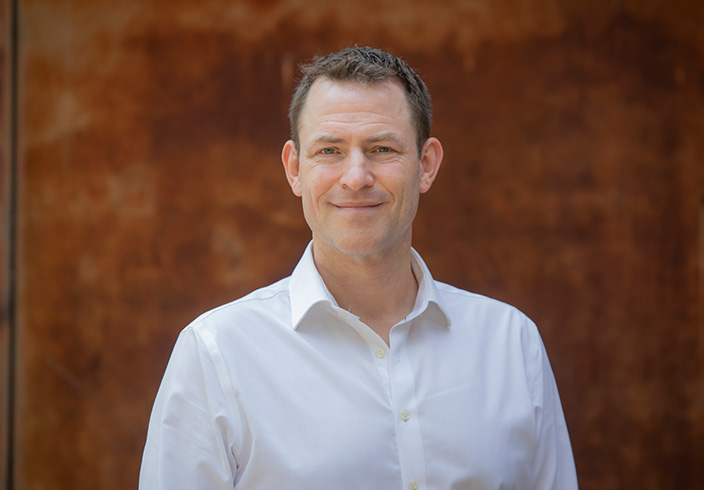Dear Dr. Høivik, when we take a look at the decarbonization initiatives of European industry, thermal storage is becoming increasingly relevant. Where do you see the greatest advantages – especially with regard to the electrification of industrial processes?
In general, we see a great interest coming from industry to decarbonize. In my opinion, this is not only because companies want to set themselves apart from others in terms of competition, but also to have a greener profile. We also see that the government is adapting legislation accordingly and setting concrete guidelines and legal requirements for the industry.
The fact is that green alternatives are becoming attractive for many industrial players. This is because there are now a large number of exciting solutions – it’s a huge market. We can see that it makes a big difference in terms of decarbonisation when companies start to electrify their previously fossil-based processes and use more renewable energy. Thermal energy storage systems are an important tool here, which are also used in combination with renewable sources such as wind, PV, and solar power plants.
In this context, we are seeing more and more industrial companies investing in the installation of new energy sources – be it a PV system on the factory roof or their own wind turbines. The next logical step to fully utilise such an investment is to combine it with thermal storage or storage systems in general. This is already happening with our partners Avery Dennison and Yara – two companies that have successfully implemented ThermalBattery™ systems for decarbonising their production facilities by combining thermal storage with solar energy or for utilization of surplus steam. Energy is stored in the thermal storage units – in this case our ThermalBattery™ – and released again when required. This means that many processes can already be electrified and made highly flexible.
With its ThermalBattery™, ENERGYNEST offers a market-ready technology that combines the advantages of thermal energy storage with a comparatively simple installation. How does this battery solution work? Can you tell us something about the design?
The ThermalBattery™ essentially consists of three components. Firstly, there are the thermal battery modules in which the energy is stored. This is where HEATCRETE® is used – a special concrete suited for high-temperature heat storage that is developed in collaboration with Heidelberg Materials. The second component is the heat transfer fluid such as steam or thermal oil. This flows through the embedded steel tubes when charging the ThermalBattery™ and transfers the thermal energy to the HEATCRETE®, the core storage material.
The consumer and heat source are the third component of our heat storage system. The heat source can be surplus steam that is drawn directly from the connected steam grid. This is the case in our project with Yara Porsgrunn, for example. When the ThermalBattery™ is discharged, steam is supplied directly to the consumer, the production plant. It is a self-contained system without an external energy source.
Solar energy can also be used as a heat source. Here, thermal oil is heated using CST systems to generate steam for the plant. Excess energy from the CST plant is stored in the ThermalBattery™. During discharge, the thermal oil flows through the battery in the opposite direction, heating it up and allowing it to be used for steam production when the solar energy is not available.
We are talking here about various components that are crucial for the functioning of the thermal storage systems: Do customers need to be prepared for high maintenance costs? How long can the ThermalBattery™ be expected to run?
A major advantage of our technology is that it is inherently maintenance-free. Inside the ThermalBattery™ modules are the thermal elements which consist of HEATCRETE® with a cast-in steel pipe. The unique concrete is a solid material with a very long service life of 30 years or more. The exact service life also depends on the heat transfer medium used. Any maintenance requirements mainly arise on the other external components outside the ThermalBattery™, such as the valves or instrumentation.
How can the ThermalBattery™ be integrated into existing customer processes as easily as possible? Are there certain prerequisites that need to be met by the customer?
Today, there are two technologies and two solutions: The ThermalBattery™ can be integrated directly into the plant’s steam grid or network. It captures high-pressure steam, stores the thermal energy and then releases it back into the steam network in the form of low-pressure steam upon demand.
If the ThermalBattery™ is used for electrification, the system can be a stand-alone unit. Energy, for example from renewable sources, is converted from electricity and stored in the form of heat and then released as heat again to the steam generation system or the system’s heating circuit. The form in which the ThermalBattery™ is integrated depends on the customer’s individual objectives and circumstances, which will of course be discussed in advance.
In modern technologies and processes based on renewable energies, efficiency is an important factor when it comes to measuring the success of a solution. How does the ThermalBattery™ perform in this context?
The thermal efficiency is very high. In relation to the energy and thermal engine, it is normally 98%. Naturally, there are minor heat losses over a 24-hour period, depending on how much insulation is fitted around the ThermalBattery™ modules. Overall, the system is very efficient.
What is the maximum amount of time the ThermalBattery™ can store energy?
Theoretically, it can be 24 hours or even several days. However, a system that releases energy quite frequently is the most economical. The investment only pays off when you discharge energy from the system. We can therefore see that a daily cycle or several cycles per day are optimal when it comes to realising the economic benefits of such a system. However, the energy can also be stored for several days, if needed. Generally speaking, the longer the energy is to be stored, the more insulation needs to be fitted. A system that is operated in the plant with rapid cycles, say two to three times a day, can be optimised with the appropriate amount of insulation and designed so that more energy is available when needed. It is therefore very flexible.
Thank you very much for talking to us!
Are you interested in ENERGYNEST, or have any questions regarding our thermal energy storage solutions or our applications for your specific industry?
Don’t hesitate to drop us a line.



